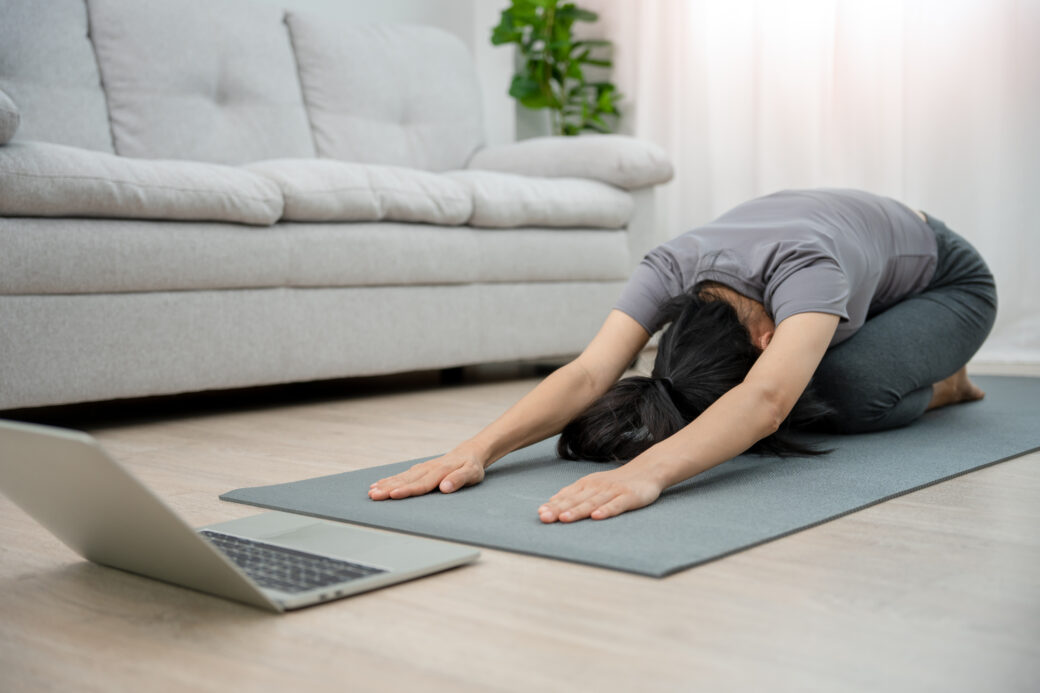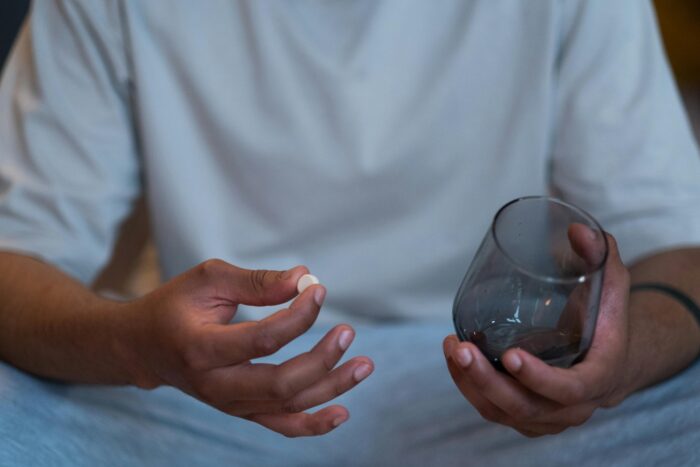
Stretching the lumbar region (lower back) can help alleviate stiffness, improve flexibility, and reduce discomfort.
Here are some effective stretches specifically targeting the lumbar spine…
Knee-to-Chest Stretch
- Starting Position – Lie on your back on a comfortable surface, such as a mat or bed.
- Execution –
- Slowly bring one knee towards your chest, using your hands to gently pull it closer until you feel a stretch in your lower back and buttocks.
- Hold this position for 15-30 seconds, breathing deeply and relaxing into the stretch.
- Slowly lower your leg back down.
- Repeat with the other leg.
- Benefits – This stretch helps release tension in the lower back muscles and can alleviate stiffness.
Child’s Pose
- Starting Position – Kneel on the floor with your knees hip-width apart and toes touching.
- Execution –
- Sit back on your heels and extend your arms forward on the ground, lowering your chest towards the floor.
- Keep your arms extended and palms flat on the floor as you relax your forehead towards the ground.
- Hold the stretch for 15-30 seconds while breathing deeply.
- Slowly return to the starting position.
- Benefits – Child’s Pose stretches the muscles of the lower back, hips, and thighs, promoting relaxation and flexibility.
Cat-Cow Stretch
- Starting Position – Begin on your hands and knees, with your wrists directly under your shoulders and knees under your hips.
- Execution –
- Inhale as you arch your back, dropping your abdomen towards the floor, lifting your tailbone and head towards the ceiling (Cow Pose).
- Exhale as you round your spine upwards towards the ceiling, tucking your chin towards your chest (Cat Pose).
- Alternate between Cow and Cat Pose for 5-10 cycles, moving with your breath.
- Benefits – Cat-Cow Stretch improves flexibility and mobility in the spine, particularly the lumbar region, while also gently massaging and stretching the back muscles.
Seated Forward Fold
- Starting Position – Sit on the floor with your legs extended straight in front of you.
- Execution
- Inhale to lengthen your spine, then exhale as you hinge at the hips and reach forward towards your toes.
- Hold onto your shins, ankles, or feet, depending on your flexibility.
- Hold the stretch for 15-30 seconds, breathing deeply into your lower back.
- Slowly release and return to the starting position.
- Benefits – Seated Forward Fold stretches the hamstrings and lower back muscles, promoting flexibility and relieving tension in the lumbar spine.
5. Supine Twist
- Starting Position – Lie on your back with your legs extended.
- Execution
- Bend one knee and bring it towards your chest.
- Gently guide the bent knee across your body towards the opposite side, using your opposite hand to stabilize the knee.
- Extend your other arm out to the side, keeping both shoulders flat on the ground.
- Hold the stretch for 15-30 seconds, feeling a gentle twist through your spine and lower back.
- Slowly return to the starting position and repeat on the other side.
- Benefits – Supine Twist stretches the muscles along the spine and promotes mobility in the lumbar region, while also releasing tension in the hips and lower back.
Tips for Safe Stretching
- Warm Up – Perform a brief warm-up such as walking or gentle movements to increase blood flow to the muscles before stretching.
- Gentle Pressure – Use gentle and controlled movements to stretch. Avoid bouncing or jerking, which can strain the muscles.
- Listen to Your Body – Stop if you feel any sharp pain or discomfort. Stretch to the point of tension, not pain.
- Consistency – Incorporate stretching into your daily routine to maintain flexibility and reduce the risk of muscle stiffness.
These stretches can be performed daily or as needed to help maintain flexibility and reduce stiffness in the lumbar spine. If you have a history of back problems or chronic pain, consult with a healthcare provider or physical therapist before starting a new stretching routine.
Related Posts
Can Too Much Lumbar Support Hurt Your Back?
On
October 29, 2024
What Not To Do With A Lumbar Strain?
On
July 19, 2024
What Is The Best Treatment For Lumbar Spine?
On
November 13, 2024
How Can I Treat My Lumbar Spine At Home?
On
September 20, 2024



